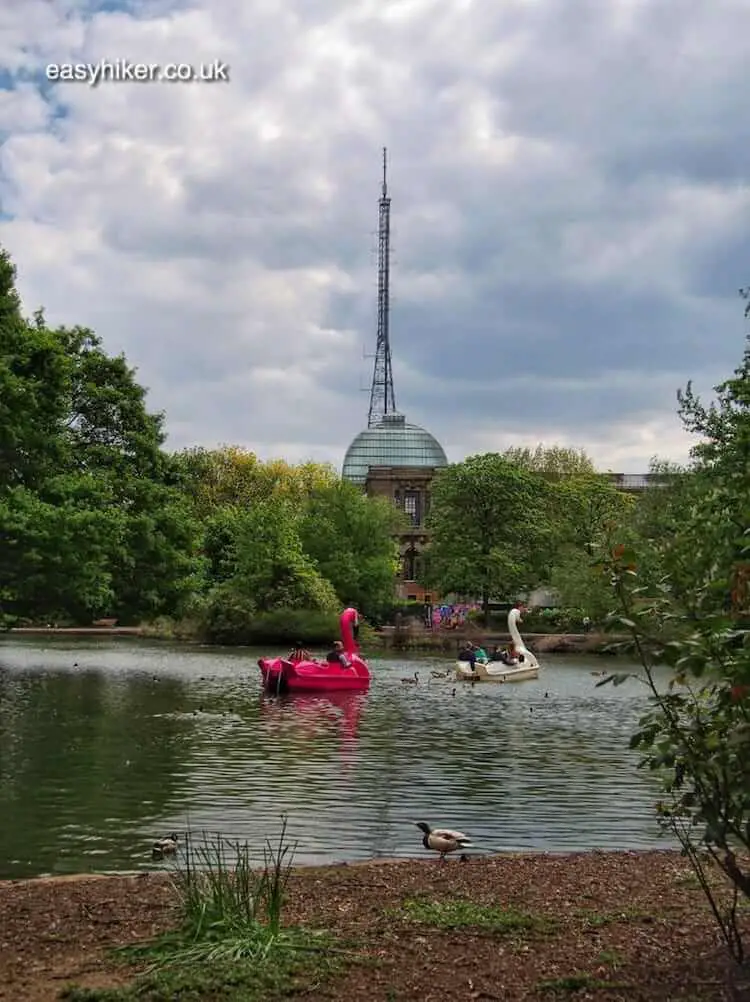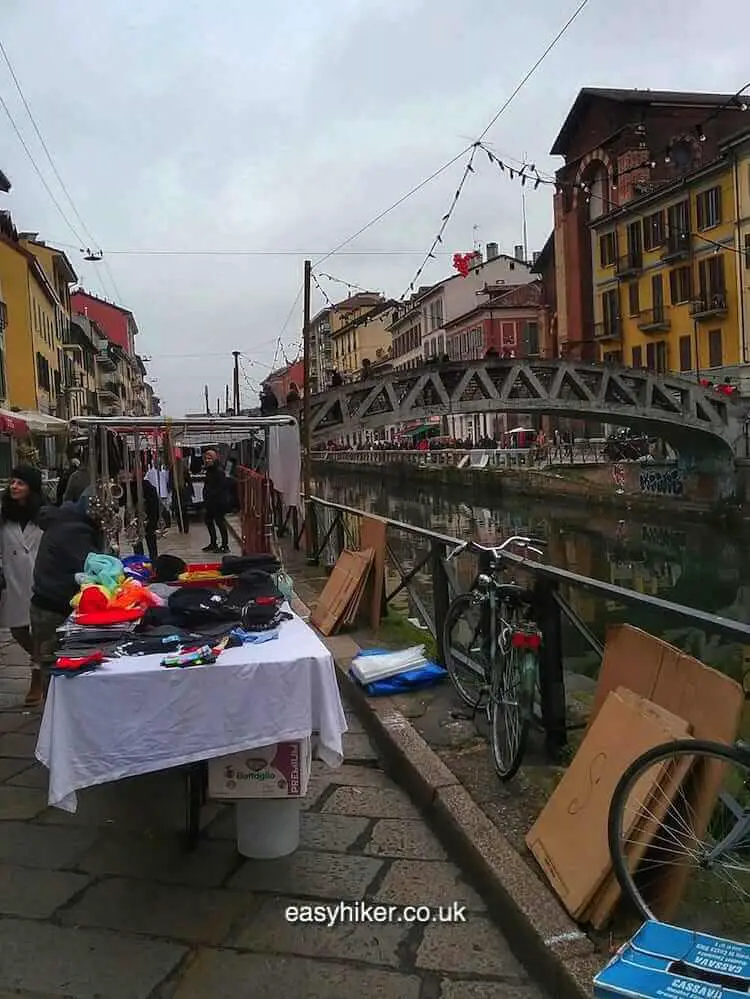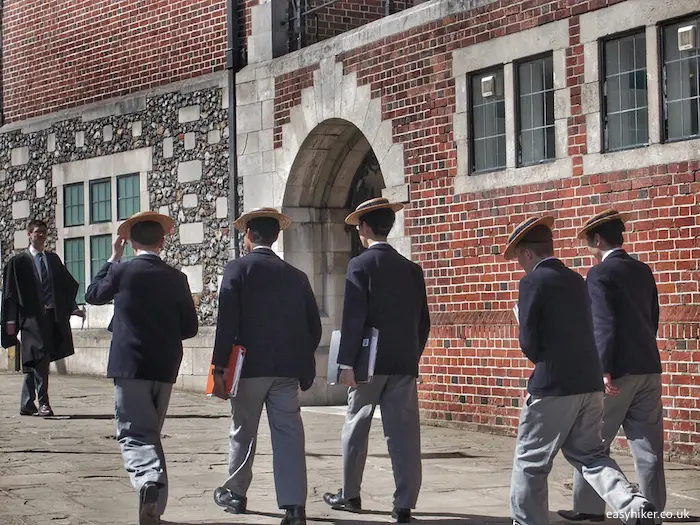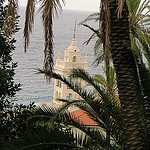What makes a great urban walk? First of all, it almost goes without saying, an urban walk should combine natural beauty with some urban rough.
All cities are beautiful, says the American poet Christopher Morley, but their beauty is grim, and urban walks should provide an introduction into this grim beauty.

But this is not everything. Urban walks, in contrast to countryside walks where nature does the talking, guide you through a multi-layered environment of many voices – and must therefore have a theme to connect everything into a single narrative.
And, perhaps most important of all, they must contain an element of discovery. Like the cities around them, they should excite you and challenge your wits. Give you the chance of feeling the joy of having solved a tricky puzzle.
Oh yes, and, as a bonus, it also helps to have a fancy trail marker – something a little more imaginative than an X on a tree or a red-and-white GR flag. After all: urban means cool, right?

Walk the Line in London
The Line, London’s first dedicated Art Walk, ticks all of those boxes. It lines up 16 – or, in the extended version, 26 – works of art on a 7 km trail that passes through a part of London that is world-famous: it starts in Stratford right at the stadium that was built for the Olympic Games 2012, underneath Anish Kapoor’s Orbit tower (Britain’s tallest sculpture) …
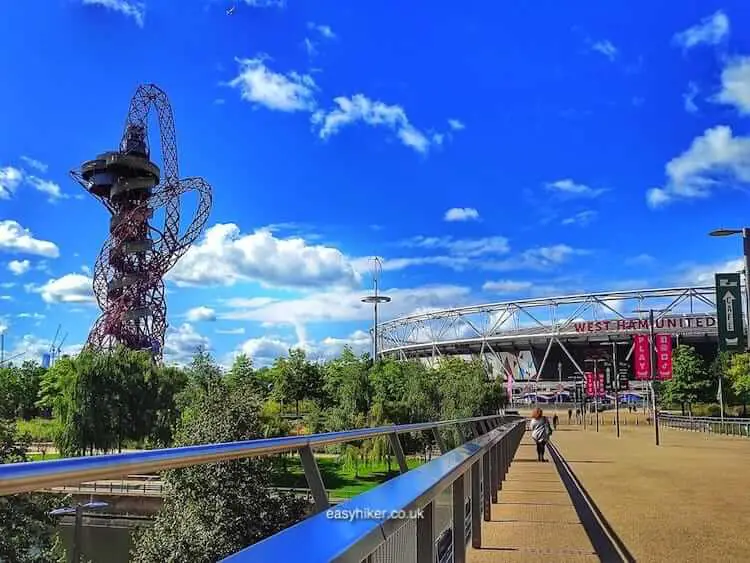
… but also, and still, is essentially little-known.
I lived and worked in London for 10 years and, for a while, spent all of my free weekends on extended walks through different areas of central London as well as the suburbs. With so many storied, beautiful and fascinating parts of London to discover, however, I had never made it to Stratford in the city’s “Far East”, which is why its townscape – around the lower Lea river and its various canals – was new and alien to me.
I certainly did not expect to come across something like Clock Mill along the way, a remnant from the dawn of the industrial age (and London’s oldest industrial monument).
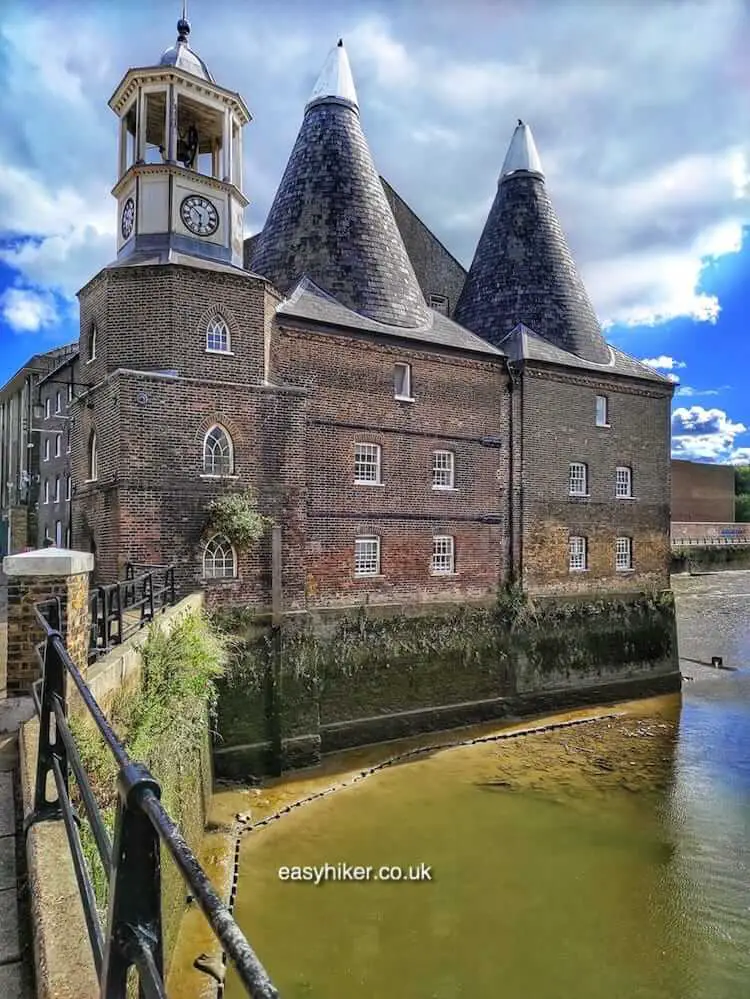
But this is something else about great urban walks: they surprise even people who think they have seen it all.
So how does The Line challenge your wits? By telling you, for example, where to look for the artworks (on a diagrammatic map) rather than by giving you precise instructions of how to find them.
Not all of the artworks are difficult to miss, even if you have pinpointed the right spot. Take for example Ron Haselden’s Diver. Can you see it? (A little hint: it is a light installation. Which would, admittedly, make the detective work much easier after dark.)
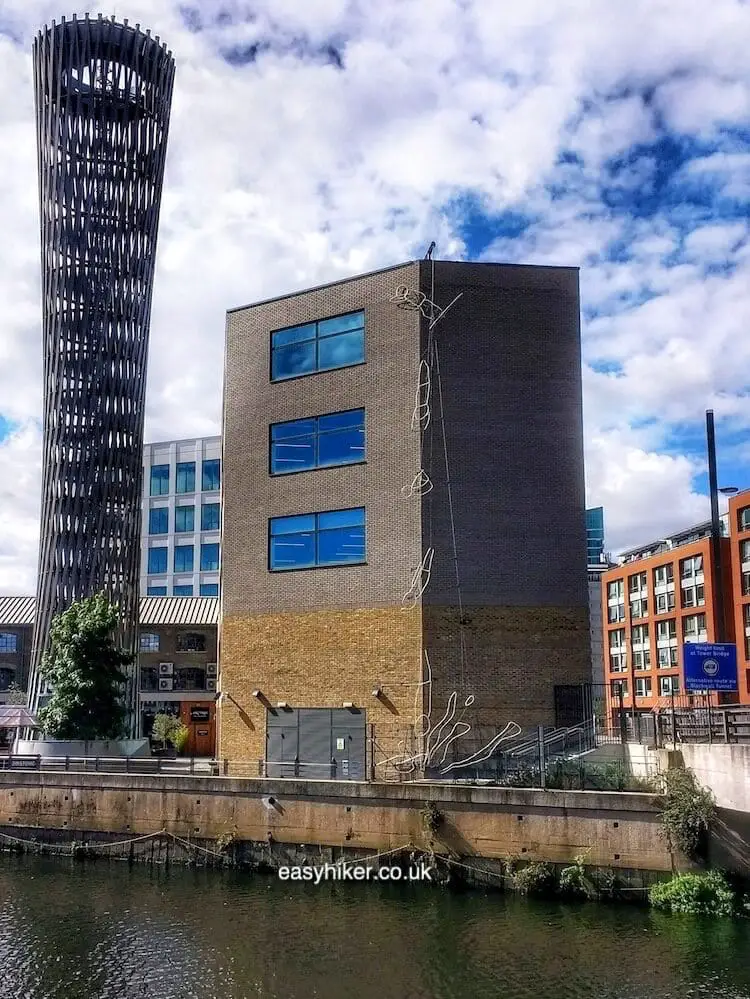
Meanwhile, not every artwork you do spot is part of the exhibition …
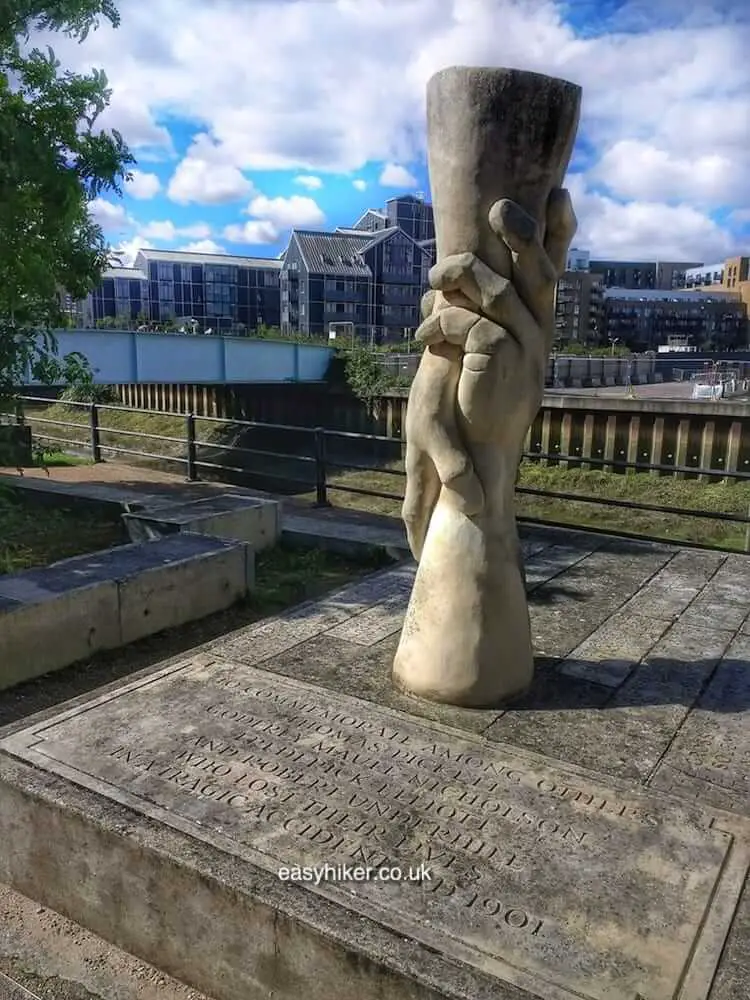
… and not everything beautiful along the way is an artwork at all. The Line keeps you on your toes in more ways than one.
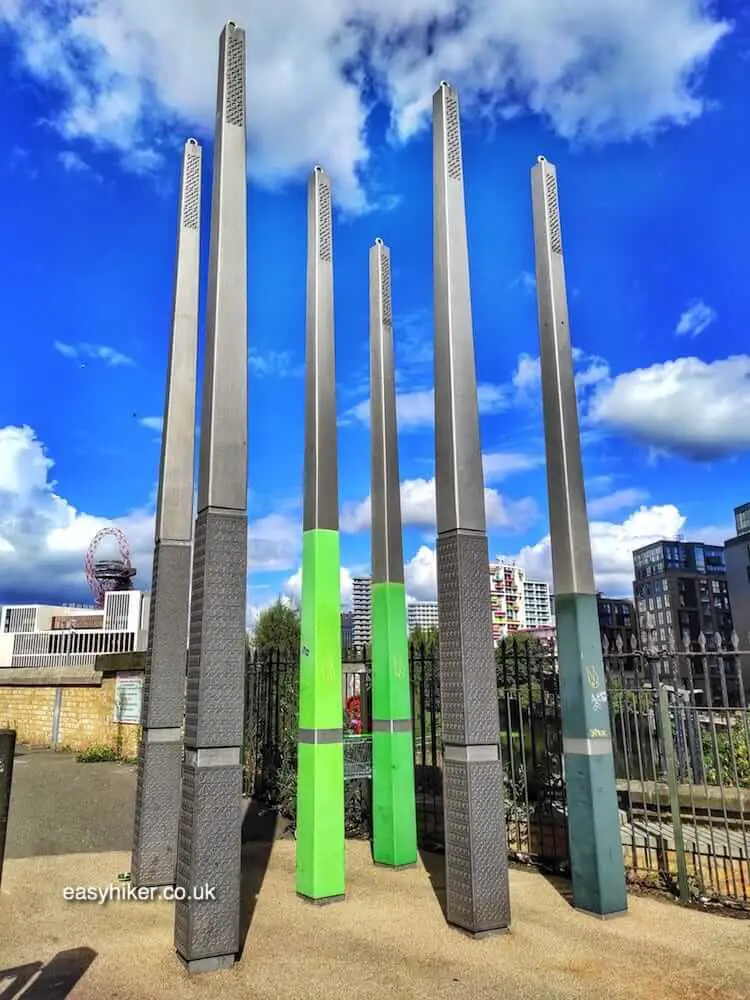
The range of the art on show is impressive. Some of the exhibits would work in any surrounding: Abigail Fallis’s take on the DNA of consumerism would be just as clever elsewhere …

… and Tracey Emin’s A Moment Without You just as beautiful.

Other exhibits work very well with their surroundings, whether these surroundings are man-made …
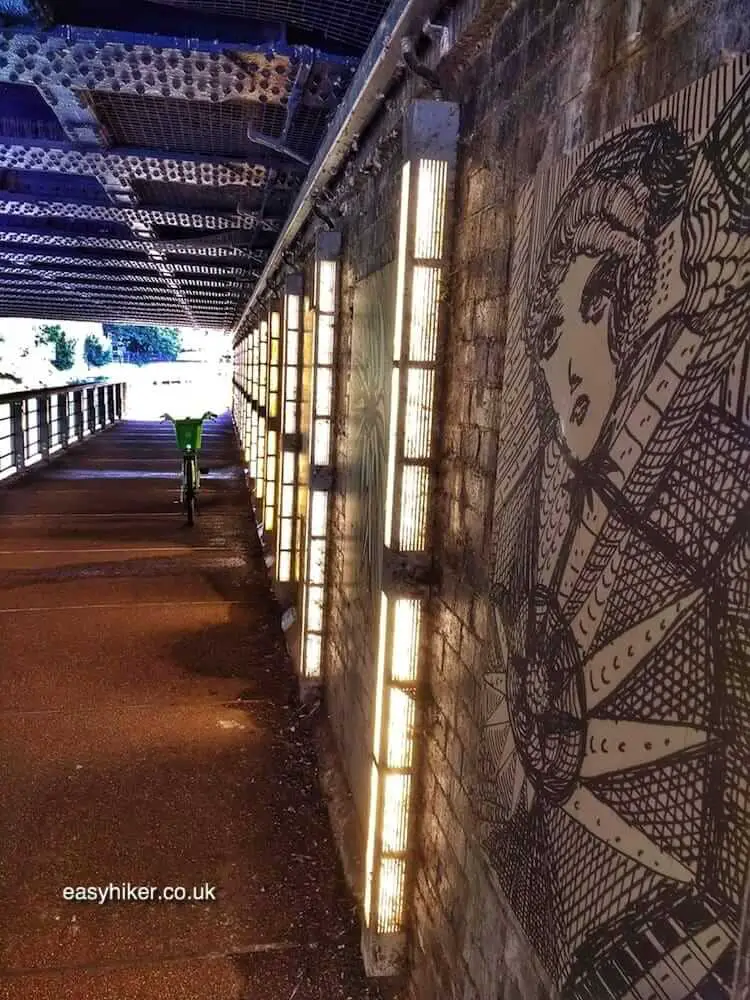
… or partly-man-made. (Do not go searching for wildlands in East London.)
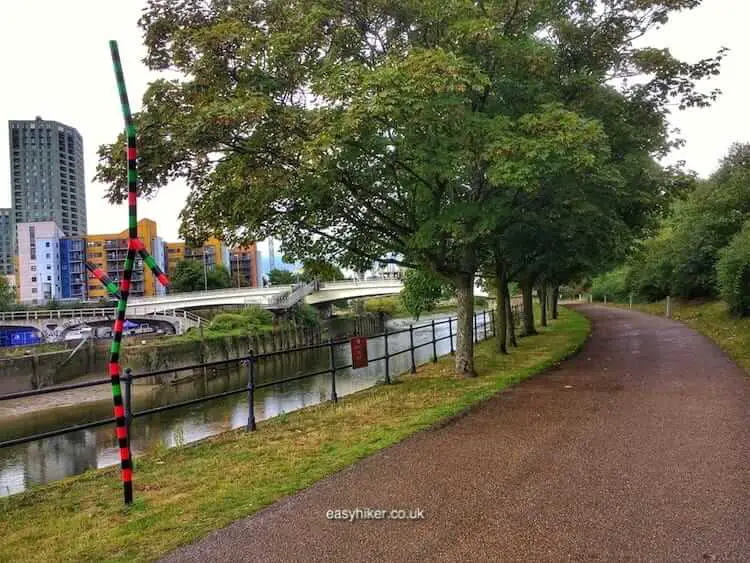
Alternatively, the artworks may even add a stanza of literature to the visual poetry of the area’s grim beauty. Helen Cammock’s On WindTides consists of two lines of text written on either side of an industrial bridge. ”We fold ourselves across the tides”, it says on one side while the other side reads …

“from silt to land sometimes we live as wind blown sand”.
There are two things you should bear in mind: firstly, The Line is in fact not linear at all but full of twists and turns which can make the route a trifle tricky to find.
Keep on your toes – and download the free map. On the same website, you can also do some reading on the art works on show.
Secondly, we only completed the main section of the walk from the Olympic Stadium to Star Lane train station. To continue, you should take a DLR train from there to Royal Victoria. Even without this extension, however, the walk took us more than half a day.
That is a long time for a distance just over three miles, but urban walks always turn out longer than you think. You walk more slowly, stop more often, and are more likely to lose your way in the labyrinth of streets or to take unscheduled detours because one member of your party (I’m looking at you, Mrs. Easy Hiker) has spotted an interesting shop in a side street. Your meal and coffee breaks will be more frequent and longer, too – temptations to stop and linger are everywhere.
Which is why you should budget your time accordingly – and, if you want to “Walk the Line” until its very end on the Greenwich Peninsula, reserve a full day for the trip.
You may also want to reflect on what would be the right kind of shoe for such a long urban walk. For many years, I used to strap on the same footwear that I would wear for a hike in the countryside, but I don’t do that anymore.
Hiking boots protect your soles and ankles from the risks of stony and uneven surfaces, but the chances of anything like that happening on urban walks are slim. Wearing hiking boots on asphalt or well-tended gravel paths is the equivalent of putting on full body armour for a trip to the local grocery shop.
So what shoes should you go for? Above all, they must be light and comfortable to wear. Think about it: you can easily spend more time in your shoes on an urban walk than on a countryside hike.
Personally, for the last few years, I have been wearing trainers on long urban walks. Let adidas help you in picking the right kind of footwear for you. Their men’s running trainers would be perfect for this purpose – not least because they also look good.
And if you are looking for something to wear on an exploration of the rougher trails in the countryside: adidas can help you with those as well.
Great urban walks are fairly exhausting as they are. So much to see, so much to process in your mind – so if you choose to walk the line in London, you should at least give your feet an easy time.



